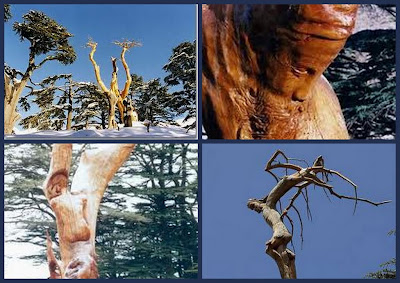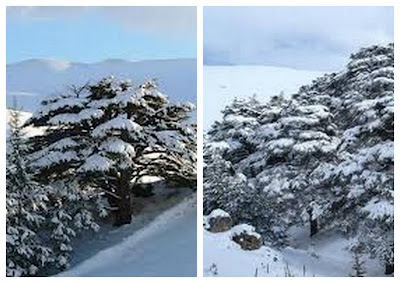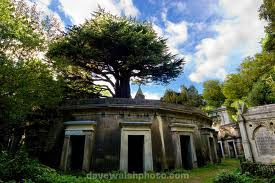“The Cedars know the history of
the earth better than history itself”
Alphonse de Lamartine, French poet and
historian (1790-1869)
What comes to your mind when you hear the word “Cedar”?
Most probably the flag of Lebanon, its national carrier Middle East Airlines (MEA), the
country’s currency, skiing, U2’s song…
And what better name to give a “revolution” in
Lebanon than “Cedar Revolution” -- triggered by the assassination of former
Lebanese Prime Minister Rafik Hariri on February 14, 2005.
In my case, it always reminds me of a trunk
that has been in my family for years, unfortunately made out of Cedar wood and
still, some 70 years later, smelling wonderful when opened.
Throughout antiquity, the Cedars of Lebanon were prized
above all other trees. Their fine wood is strong, straight and wonderfully
scented. Cedar wood was the first choice for any temple or palace.
These magnificent trees helped give the Phoenicians a high
place among other nations, and became the symbol by which they and their
descendants were known. Revered
and admired, they stand for prosperity and national pride.
 |
| Lebanon's Cedars at risk from global warming and insects |
But the cherished Cedar Tree (Cedrus libani) is not well. It is
fighting its own revolution against time. It is feeling the strains of
centuries and is at risk from global warming and insects. It has now been added
to the list of threatened species, although at the lowest level of threat, by
the International Union for
Conservation of Nature (IUCN), the world’s oldest and largest global environmental
organization.
In the past, Lebanese
mountains were covered with Cedars. Sadly, all that is left today is 18
scattered patches of protected Cedar land. In total, protected forests (both Cedar
and other) make up approximately four to eight percent of the Lebanese
territory.
A Guardian article earlier this month writes of Lebanon’s Cedar at risk from global
warming causing shorter winters and more outbreaks of damaging insects. Alasdair Soussi writes: “The Cedars, some up to 3,000 years old and
almost all of which are now protected, need a minimum amount of snow and rain
for natural regeneration. But global warming has meant that Lebanon's Cedars
are being subjected to shorter winters and less snow, and the Lebanese
government estimates that snow cover could be cut by 40 percent by 2040.”
Soussi spoke to Nabil Nemer, head of the
agricultural sciences department at Lebanon's
Holy Spirit University of Kaslik, who says the lack of snow is not the only problem linked to climate
change. “Insects, due to the changing climatic condition, become more active
and their development rate is faster, thus causing more outbreaks, which weaken
the Cedar tree, making them more susceptible to other diseases and/or insects,
which will ultimately kill the trees. At least one insect has been studied, and
the results showed that outbreaks of this insect are due to climate change, a
low period of snow, and low humidity in summer. This insect, the Cephalcia
tannourinensis, is a serious Cedar tree defoliator."
Famous French poet and
historian Alphonse de Lamartine visited the “Cedars of the Lord,” or Arz al-Rab near Bcharre, back in 1832. Putting
a memorabilia on the trunk of a very old Cedar tree commemorated his visit.
 |
| Rude Rahme's Lamartine Cedar |
When it died, Lebanese
Bcharre-born painter,
sculptor and poet Rudy Rahme created the “Lamartine Cedar,” one of the most
remarkable wooden and largest vegetal sculpture in the world.
It stands 39 meters high and contains 70
human figures representing the
relationship between time and place. Among the figures are the birth, life and
death of Jesus.
Rahme also transformed two other dead Cedar trees into pieces of
art and there are still 11 Cedars waiting for their turn to complete the “human
forest” in the Cedar Forest.
 |
| Will Lebanon get enough snow for its Cedars this year? |
Arz al-Rab are the oldest Cedars in
Lebanon and give an accurate idea of the stature and splendor these trees
attained in antiquity. About 375 Cedars of great age stand in a sheltered
glacial pocket of Mount Makmel. Four of them, many hundreds of years old, have
reached a height of 35 meters and their trunks are between 12 and 14 meters
around. They have straight trunks and strong branches that spread their regular
horizontal boughs like fans.
Also among the inhabitants of the forests are
some thousand young trees. Concern for this modern remnant of historic Cedars
goes back to 1876, when the 102-hectare grove was surrounded by a high stone wall.
Financed by Queen Victoria, the wall protects against one of the Cedar's
natural enemies -- the goats who enjoy feasting on young saplings.
Over the centuries, Assyrians, Babylonians and
Persians made expeditions to Mount Lebanon for timber or extracted tributes of
wood from the coastal cities of Canaan-Phoenicia.
The Phoenicians themselves made use of the Cedar,
especially for their merchant fleets. Solomon requested large supplies of Cedar
wood, along with architects and builders from King Hiram of Tyre to build his
temple. Nebuchadnezzar boasted on a cuneiform inscription: "I brought for
building, mighty Cedars, which I cut down with my pure hands on Mount Lebanon."
Its fragrance and durability, as well as the
length of the great logs, made Cedar wood especially desirable.
The Egyptians used Cedar resin for mummification,
and pitch was extracted from these trees for waterproofing and caulking.
In the second century A.D., the Roman Emperor
Hadrian attempted to protect the Cedar forest with boundary markers, most
carved into living rock, others in the form of separate engraved stones. Over
200 such markers have been recorded, allowing scholars to make an approximate
reconstruction of the ancient forest boundaries. Two of these markers, carved
in abbreviated Latin, can be seen at the American University of Beirut Museum.
Today too, only a few stands of these trees-of-kings are
left, with the most impressive groves being near Bcharre in the northern
Lebanon Mountains and the Chouf Reserve in the south.
Luckily, there is now an active program to conserve and
regenerate the forests. The Lebanese approach has emphasized natural
regeneration rather than planting, and this by creating the right conditions. Cedar
and Nature Reserves created by the Lebanese state that contain Cedars include
the Chouf Cedar Reserves, the Jaj Cedar Reserve, the Tannourine Reserve, the
Ammouaa and Karm Shbat Reserves in the Akkar district, and Arz al-Rab forest.
 |
| The three-centuries-old Cedar of Lebanon in Highgate Cemetery |
One of the famous Cedar trees outside Lebanon is in the UK. It
is the most prominent landscaping feature in London's historic Highgate Cemetery. In the "Circle of
Lebanon," a three-centuries-old Cedar of Lebanon towers in the middle of a
circular trench cut into the ground and lined with mausoleums and magnificent
family vaults influenced by Egyptian, Gothic and Classical styles.
Highgate Cemetery in north London opened in 1839 and is the
final resting place of many famous names such as Karl Marx, Malcolm McLaren and
Jeremy Beadle.
Much more needs to be done to restore and preserve these proud,
tall, strong symbols of Lebanon and its people.
Lebanon’s Cedar is fighting its own Winter Revolution and it
needs all the help it can get.

